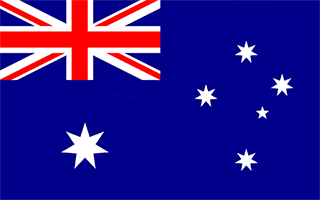Facts and Data
Webpages:
Official Unesco Page
Shark Bay World Heritage Site (Western Australia Department of Environment and Conservation
Shark Bay (Department of the Environment, Water, Heritage and the Arts)
The Official Site for Australian Travel and Tourism Australia
Protectedplanet.net
Basis Data:
Unesco World heritage since: 1991
Size of heritage: 2,200,902 ha
Coordinates:
Longitude: 113,436°
Latitude: -24,514°
Summary
At the most westerly point of the Australian continent, Shark Bay, with its islands and the land surrounding it, has three exceptional natural features: its vast sea-grass beds, which are the largest (4,800 km2) and richest in the world; its dugong (‘sea cow’) population; and its stromatolites (colonies of algae which form hard, dome-shaped deposits and are among the oldest forms of life on earth). Shark Bay is also home to five species of endangered mammals.
Location on Map
Show bigger map on Openstreetmap
Shark Bay, Western Australia: A Pristine World Heritage Site
Located in the State of Western Australia, Shark Bay is a UNESCO World Heritage site renowned for its exceptional natural beauty and biodiversity. Covering an area of approximately 2.2 million hectares, this stunning coastal region is home to a diverse range of marine life, unique ecosystems, and fascinating geological formations.
History
The history of Shark Bay dates back thousands of years, with evidence of Aboriginal occupation found in the region. The Malgana people, the traditional custodians of the land, have a deep spiritual connection to Shark Bay and its surrounding areas. Their knowledge and cultural practices have played a vital role in the preservation of this remarkable site.
European exploration of Shark Bay began in the 17th century when Dutch navigator Dirk Hartog became the first recorded European to set foot on Australian soil in 1616. He left behind an inscribed pewter plate, known as the Hartog Plate, which is now displayed in the Western Australian Museum.
Shark Bay gained international recognition when it was inscribed as a UNESCO World Heritage site in 1991. Its unique and diverse ecosystems, including seagrass beds, stromatolites, and the world's largest population of dugongs, were recognized as being of outstanding universal value.
Current State
Shark Bay remains a pristine and well-preserved natural wonder, attracting visitors from around the world. Its crystal-clear turquoise waters, white sandy beaches, and vibrant marine life make it a paradise for nature enthusiasts and adventure seekers.
The seagrass beds of Shark Bay are one of the most extensive and diverse in the world, providing a vital habitat for numerous marine species. These seagrass meadows are home to the largest population of dugongs, also known as sea cows, which graze on the seagrass and are considered a symbol of the region.
Another unique feature of Shark Bay is its stromatolites, ancient rock-like structures formed by microbial communities. These living fossils provide valuable insights into the Earth's early history and are considered a significant scientific and educational resource.
The protection and conservation of Shark Bay's fragile ecosystems are of utmost importance. Efforts are made to manage and monitor the impact of human activities, such as fishing and tourism, to ensure the long-term sustainability of this World Heritage site.
Visitors to Shark Bay can explore its wonders through various activities, including snorkeling, diving, and wildlife cruises. The region offers a range of accommodation options, from eco-friendly resorts to camping sites, allowing visitors to immerse themselves in the natural beauty of the area.
Shark Bay, Western Australia, stands as a testament to the remarkable diversity and resilience of our planet's ecosystems. Its recognition as a UNESCO World Heritage site ensures its protection for future generations to appreciate and cherish.
